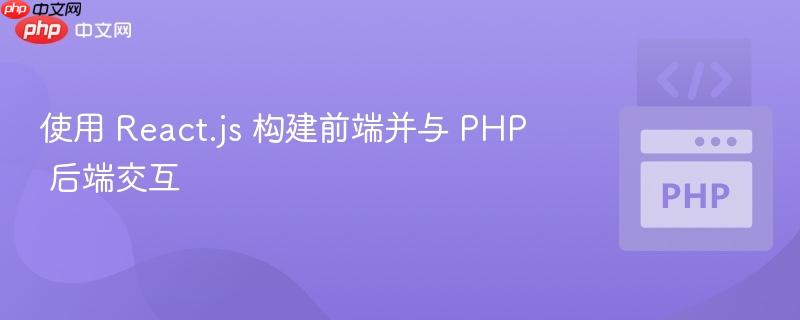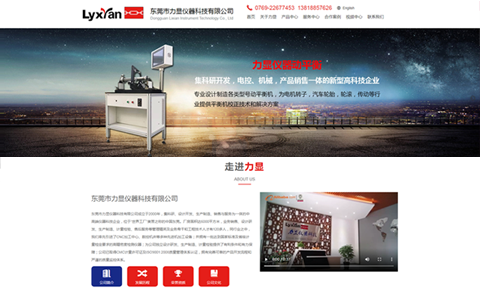
本文旨在指导开发者如何使用 React.js 构建用户界面,并通过 REST API 与 PHP 后端进行数据交互。我们将介绍如何发起 HTTP 请求从 PHP 后端获取数据,并在 React 组件中展示这些数据。文章将提供代码示例,帮助你理解并实现前后端的数据交互。
1. PHP 后端 API 准备
首先,我们需要创建一个 PHP 脚本,它将处理来自前端的请求并返回数据。 以下是一个简单的 PHP 示例,它从 data.json 文件读取数据并返回 JSON 格式的响应。
<?phpheader('Content-Type: application/json'); // 设置响应头为 JSoninterface ReaderInterface{public function read(string $input): OfferCollectionInterface;} interface OfferInterface{}interface OfferCollectionInterface{public function get(int $index): OfferInterface;public function getIterator(): Iterator;}class Offer implements OfferInterface{public $offerId;public $productTitle;public $vendorId;public $price;public function __toString(): string{ return "$this->offerId | $this->productTitle | $this->vendorId | $this->price\n"; }} class OfferCollection implements OfferCollectionInterface{private $offersList = array();public function __construct($data){ foreach ($data as $json_object) { $offer = new Offer(); $offer->offerId = $json_object->offerId; $offer->productTitle = $json_object->productTitle; $offer->vendorId = $json_object->vendorId; $offer->price = $json_object->price; array_push($this->offersList, $offer); }}public function get(int $index): OfferInterface{ return $this->offersList[$index];}public function getIterator(): Iterator{ return new ArrayIterator($this->offersList);}public function __toString(): string{ return implode("\n", $this->offersList);}}class Reader implements ReaderInterface{public function read(string $input): OfferCollectionInterface{ if ($input != null) { $content = file_get_contents($input); $json = json_decode($content); $result = new OfferCollection($json); return $result; } return new OfferCollection(null);}}class Logger {private $filename = "logs.txt";public function info($message): void { $this->log($message, "INFO");}public function error($message): void { $this->log($message, "ERROR");}private function log($message, $type): void { $myfile = fopen($this->filename, "a") or die("Unable to open file!"); $txt = "[$type] $message\n"; fwrite($myfile, $txt); fclose($myfile);}}$json_url = 'data.json';$json_reader = new Reader();$offers_list = $json_reader->read($json_url);function count_by_price_range($price_from, $price_to){global $offers_list;$count = 0;foreach ($offers_list->getIterator() as $offer) { if ($offer->price >= $price_from && $offer->price <= $price_to) { $count++; }}return $count;}function count_by_vendor_id($vendorId){global $offers_list;$count = 0;foreach ($offers_list->getIterator() as $offer) { if ($offer->vendorId == $vendorId) { $count++; }}return $count;}$cli_args = $_SERVER['argv'];$function_name = $cli_args[1];$logger = new Logger();switch ($function_name) {case "count_by_price_range": { $logger->info("Getting Count By Price Range From: $cli_args[2] TO $cli_args[3]"); echo count_by_price_range($cli_args[2], $cli_args[3]); break;}case "count_by_vendor_id": { $logger->info("Getting Count By vendor Id: $cli_args[2]"); echo count_by_vendor_id($cli_args[2]); break;}}$data = array("message" => "Hello from PHP!");echo json_encode($data);?>登录后复制确保你的 data.json 文件存在,并且包含了有效的 JSON 数据。
2. React.js 前端设置
接下来,创建一个 React 应用。 你可以使用 create-react-app 快速搭建项目:
立即学习“PHP免费学习笔记(深入)”;
npx create-react-app my-react-appcd my-react-app登录后复制
3. 使用 fetch API 获取数据
在 React 组件中,可以使用 fetch API 向 PHP 后端发起请求。 以下是一个示例组件,它在组件挂载后从 PHP 后端获取数据,并将数据存储在 state 中:
import React, { useState, useEffect } from 'react';function App() { const [message, setMessage] = useState(''); useEffect(() => { const fetchData = async () => { try { const response = await fetch('your-php-backend-url.php'); // 替换为你的 PHP 后端 URL const data = await response.json(); setMessage(data.message); } catch (error) { console.error('Error fetching data:', error); setMessage('Failed to load data.'); } }; fetchData(); }, []); // 空依赖数组表示只在组件挂载后执行一次 return ( <div> <h1>{message}</h1> </div> );}export default App;登录后复制代码解释:
useState 用于声明一个名为 message 的 state 变量,用于存储从 PHP 后端获取的消息。useEffect 用于在组件挂载后执行 fetchData 函数。fetch('your-php-backend-url.php') 发起一个 GET 请求到你的 PHP 后端。 请务必将 'your-php-backend-url.php' 替换为你的实际 URL。response.json() 将响应体解析为 JSON 格式。setMessage(data.message) 将解析后的消息更新到 state 中。如果在获取数据过程中发生错误,catch 块将捕获错误并在控制台输出错误信息,同时更新 message state 显示错误信息。空依赖数组 [] 确保 useEffect 只在组件挂载后执行一次。4. 处理 CORS (跨域资源共享)
如果你的 React 应用和 PHP 后端运行在不同的域名或端口上,你可能会遇到 CORS 问题。 为了解决这个问题,你需要在 PHP 后端设置 CORS 头部。
<?phpheader('Access-Control-Allow-Origin: *'); // 允许所有来源header('Content-Type: application/json');// ... 你的 PHP 代码 ...?>登录后复制警告: 在生产环境中,强烈建议限制 Access-Control-Allow-Origin 为你的 React 应用的域名,而不是使用 * 允许所有来源。
 知我AI·PC客户端
知我AI·PC客户端 离线运行 AI 大模型,构建你的私有个人知识库,对话式提取文件知识,保证个人文件数据安全
 0 查看详情
0 查看详情 
5. 发送 POST 请求
除了 GET 请求,你还可以使用 fetch API 发送 POST 请求,以便向 PHP 后端传递数据。
import React, { useState } from 'react';function MyComponent() { const [name, setName] = useState(''); const handleSubmit = async (event) => { event.preventDefault(); try { const response = await fetch('your-php-backend-url.php', { method: 'POST', headers: { 'Content-Type': 'application/json', }, body: JSON.stringify({ name: name }), }); const data = await response.json(); console.log(data); // 处理来自 PHP 后端的响应 } catch (error) { console.error('Error sending data:', error); } }; return ( <form onSubmit={handleSubmit}> <label> Name: <input type="text" value={name} onChange={(e) => setName(e.target.value)} /> </label> <button type="submit">Submit</button> </form> );}export default MyComponent;登录后复制PHP 后端处理 POST 请求:
<?phpheader('Access-Control-Allow-Origin: *');header('Content-Type: application/json');header('Access-Control-Allow-Methods: POST'); // 允许 POST 请求header('Access-Control-Allow-Headers: Content-Type'); // 允许 Content-Type 头部$data = json_decode(file_get_contents('php://input'), true);if (isset($data['name'])) { $name = $data['name']; $response = array('message' => 'Hello, ' . $name . '!'); echo json_encode($response);} else { http_response_code(400); // Bad Request $response = array('message' => 'Name parameter is missing.'); echo json_encode($response);}?>登录后复制代码解释:
在 React 组件中,我们使用 fetch 发起一个 POST 请求,并将数据作为 JSON 字符串包含在请求体中。在 PHP 后端,我们使用 file_get_contents('php://input') 获取原始的 POST 数据,然后使用 json_decode 将其解析为 PHP 数组。我们还需要设置 Access-Control-Allow-Methods 头部来允许 POST 请求,并设置 Access-Control-Allow-Headers 允许 Content-Type 头部。6. 错误处理
在实际应用中,对 API 请求进行适当的错误处理非常重要。 你应该检查响应状态码,并在出现错误时向用户显示友好的错误消息。
import React, { useState, useEffect } from 'react';function App() { const [data, setData] = useState(null); const [error, setError] = useState(null); const [loading, setLoading] = useState(true); useEffect(() => { const fetchData = async () => { try { const response = await fetch('your-php-backend-url.php'); if (!response.ok) { throw new Error(`HTTP error! status: ${response.status}`); } const json = await response.json(); setData(json); } catch (e) { setError(e); } finally { setLoading(false); } }; fetchData(); }, []); if (loading) { return <div>Loading...</div>; } if (error) { return <div>Error: {error.message}</div>; } return ( <div> <h1>Data from PHP Backend:</h1> <pre>{JSON.stringify(data, null, 2)}</pre> </div> );}export default App;登录后复制代码解释:
我们添加了 loading 和 error 状态来跟踪 API 请求的状态。在 try...catch 块中,我们检查 response.ok 来确保响应状态码为 200-299。 如果状态码不在这个范围内,我们抛出一个错误。在 finally 块中,我们设置 loading 为 false,无论请求成功还是失败。根据 loading 和 error 状态,我们渲染不同的 UI。总结
本文介绍了如何使用 React.js 构建前端,并通过 REST API 与 PHP 后端进行数据交互。 我们学习了如何发起 GET 和 POST 请求,如何处理 CORS 问题,以及如何进行错误处理。 通过这些知识,你可以构建功能强大的 Web 应用程序,将 React.js 的前端能力与 PHP 后端的灵活性结合起来。记住,在生产环境中,务必采取适当的安全措施,例如验证用户输入和限制 CORS 来源。
以上就是使用 React.js 构建前端并与 PHP 后端交互的详细内容,更多请关注php中文网其它相关文章!








